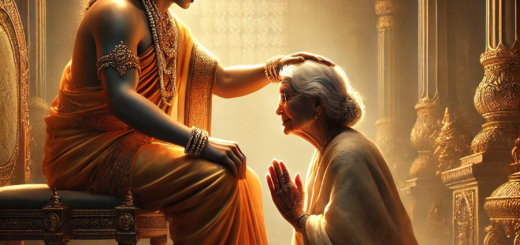The Subtle Art of Reacting Less and Living More Mindfully

In the Bhagavad Gita, Lord Krishna describes Sthitaprajnathe as the state of unwavering wisdom and peace, where one remains balanced amidst life’s chaos. At first glance, this might seem like an abstract ideal, achievable only by sages. But in truth, it starts with simple, everyday practices.
Recognizing the Egoic Mind
Let’s start with a common example:
- Your phone buzzes with a notification. Instinctively, you check it and feel the need to respond, even though the sender might not expect an immediate reply—or any reply at all.
This reflexive reaction is driven by the egoic mind, which craves validation and engagement, even when it’s unnecessary.
Another example:
- Someone makes a casual comment or expression you disagree with. You find yourself arguing over it, even though leaving it unnoticed would have brought peace and simplicity to your day.
These small, everyday moments of overreaction steal our inner calm. And yet, they present perfect opportunities to practice Sthitaprajnathe. Later we can apply the same to life’s complex scenarios too.
What Does Practicing Sthitaprajnathe Look Like?
- Pause and Observe: Before reacting to a notification, an argument, or even your own thoughts, take a moment to observe. Ask yourself: Is my response truly necessary?
- Mindful Engagement: When a situation genuinely needs your attention, respond with clarity and purpose. Afterward, consciously return to your state of inner calm soon.
- Letting Go of Unnecessary Battles: Not every comment, message, or thought deserves your energy. The more you let go of these distractions, the more peace you cultivate within.
A Lesson from the Battlefield
Arjuna, standing amidst the Kurukshetra battlefield, found himself paralyzed by emotions and thoughts that clouded his judgment. Lord Krishna’s teachings helped him see the bigger picture—to act in alignment with Loka Kalyana (the welfare of the world) rather than succumbing to his ego-driven fears and attachments.
Like Arjuna, we, too, face battles—not only with external world, but within ourselves. By practicing Sthitaprajnathe, we learn to rise above impulsive reactions and act with purpose and peace. This will make our life simple.
A Simple Truth
The journey to Sthitaprajnathe begins with everyday moments. By not reacting to every notification, avoiding unnecessary arguments, and letting go of intrusive thoughts, we take small steps toward aligning with the divine principles of balance and clarity. Please note, sometimes mindful silence might also be right response.
The Path to Peace
When you start practicing Sthitaprajnathe, it may initially create discomfort with those around you. They may question your silence or non-reactive behavior which you identify as unnecessary. But as this practice becomes a natural part of your lifestyle, you will find that it brings peace—not just within you but also to your relationships and environment.
Over time, your inner calm will reflect outward, influencing those around you to embrace a similar harmony.
Reflect and Practice
Every moment in life presents a choice:
- To react or remain composed.
- To let the ego dominate or let wisdom guide.
As you begin to practice Sthitaprajnathe, you’ll realize that most situations resolve themselves without your intervention. The fewer battles you fight with the external world or your inner thoughts, the more you create space for true peace.
Connect with me:
Website: www.avyaktah.com
Email: connect@avyaktah.com
Linkedin: www.linkedin.com/in/avyaktah
#Mindfulness #InnerPeace #Sthitaprajnathe #BhagavadGitaWisdom #ReactLessLiveMore #EmotionalIntelligence #PersonalGrowth #SelfAwareness #MindfulLiving #CalmMind





